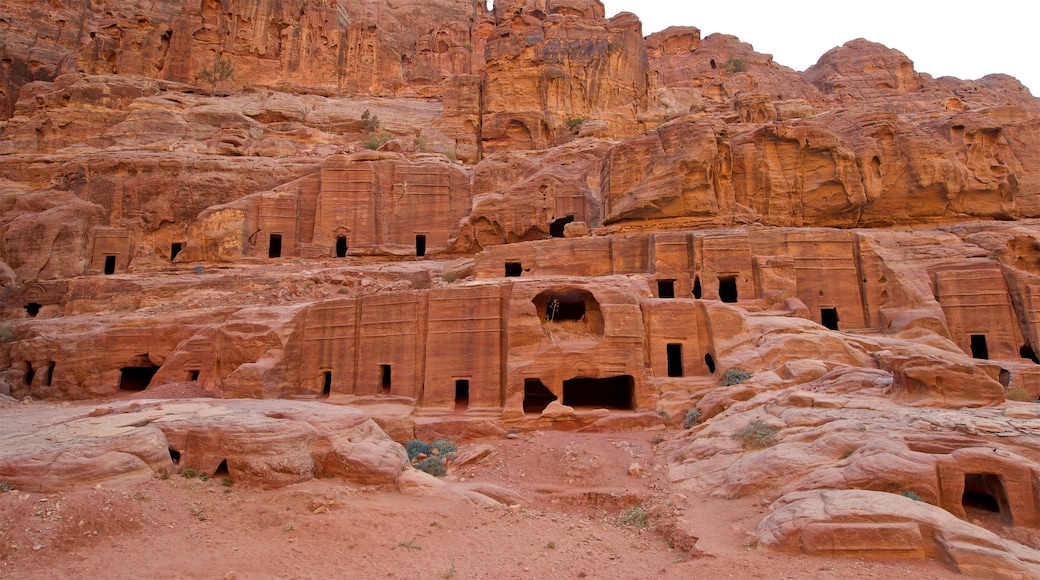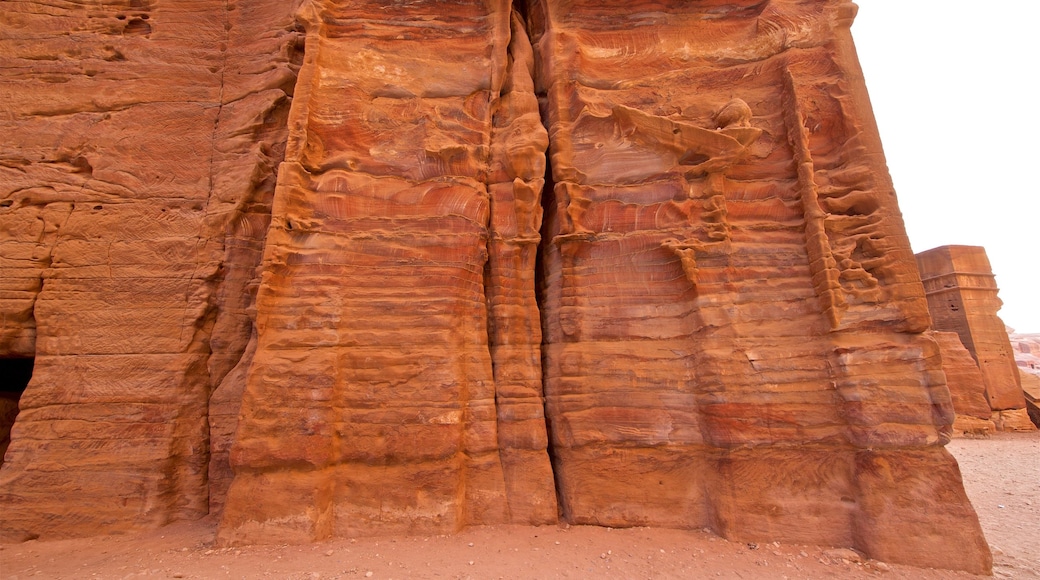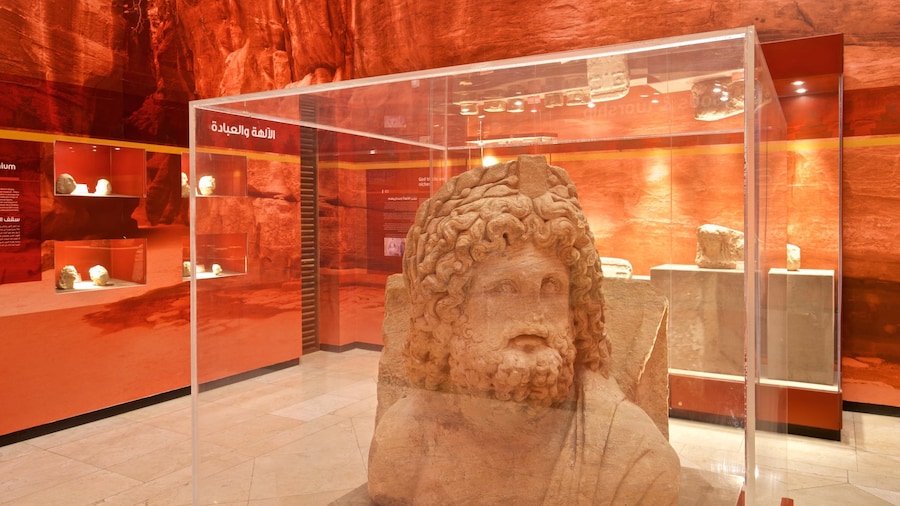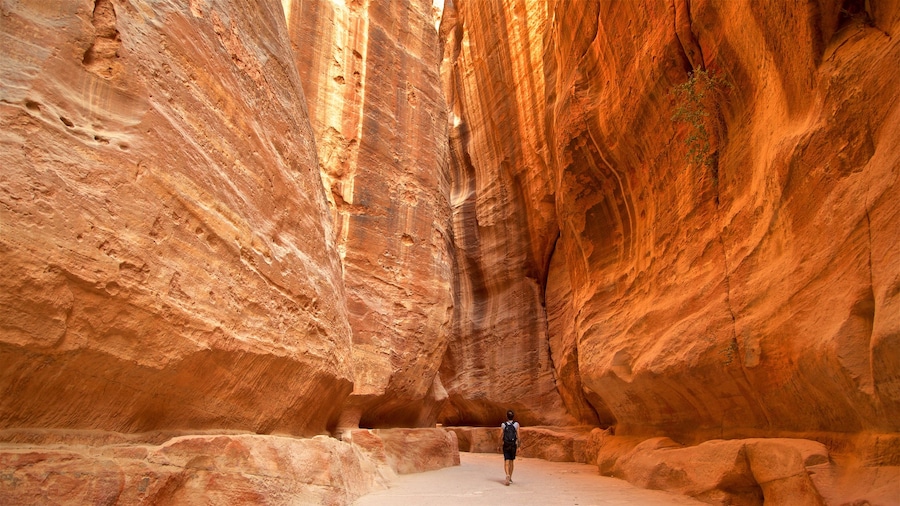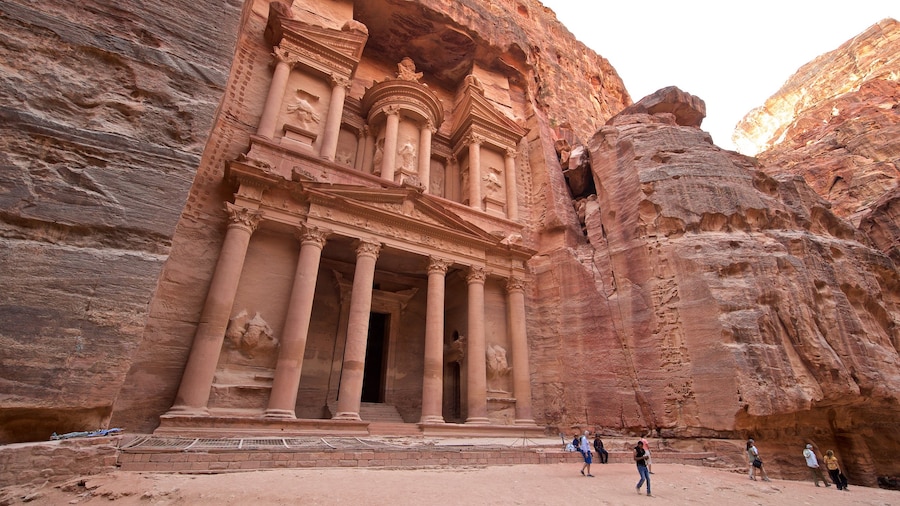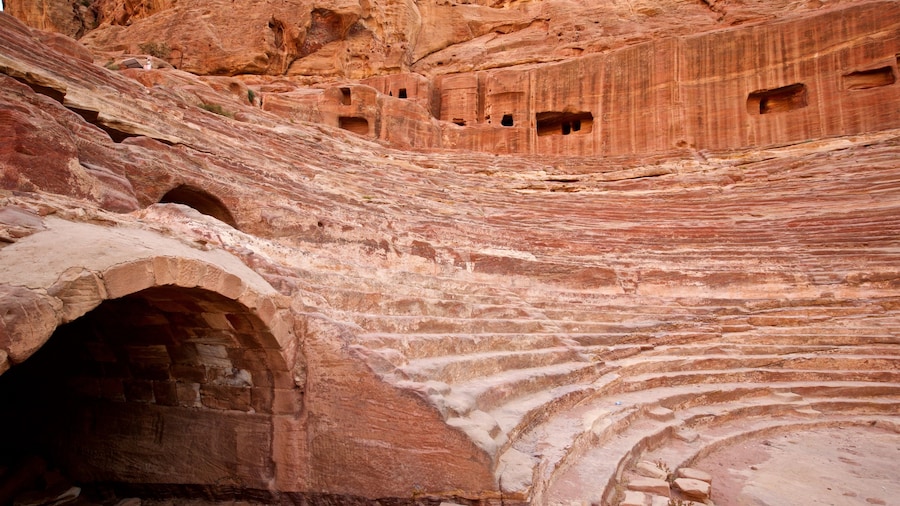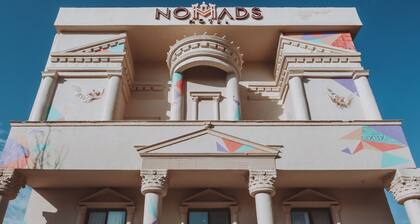After seeing The Treasury at the start of Petra, the Street of Façades will have you stop and stare in amazement all over again. The huge tombs in the rocks are adorned with carvings, adding grandeur to the important burial sites inside.
As the gateway to the Nabatean capital of Petra itself, the Street of Façades is embedded in the rock face of the steep canyon that gave access to the ancient city. Along with The Treasury, it’s your introduction to the many archeological treasures of Petra and is one of its most photographed features.
Look up at the magnificent tombs that tower overhead. The tombs resemble large buildings that were carved out of the rock face. The sheer scale of it all is overwhelming. The steep cliffs with their elaborate façades are slowly eroding due to sandstorms and floods, but some of the inner tombs are still safe to explore.
The bigger ones include the Urn Tomb, Corinthian Tomb, Silk Tomb and Palace Tomb. These final resting places have been robbed of their contents long before the first archeologists arrived, so there is not much to discover today.
The most impressive tombs were reserved for the rich and famous and the smaller ones for the poorer Nabateans. The burial interfaces that were decorated with grindstones and other ornaments may well have belonged to princes or other powerful people. The tomb of Anesho, for example, was the burial place for the minister of Queen Nabatiyeh Shaqilh II, who ruled around A.D. 70. You can find it in the far south corner of the row of tombs, overlooking the outer Siq.
The Street of Façades is situated in the southern cliff face, just past The Treasury. This “street” leads you down into the heart of the “Lost City” of Petra, now one of the "New" Seven Wonders of the World.


